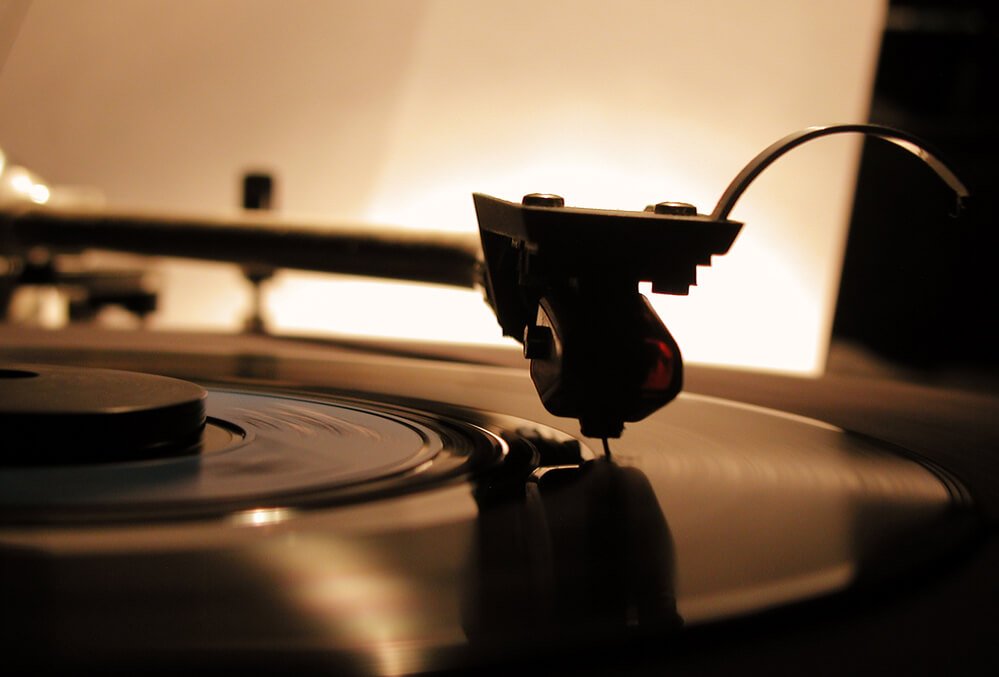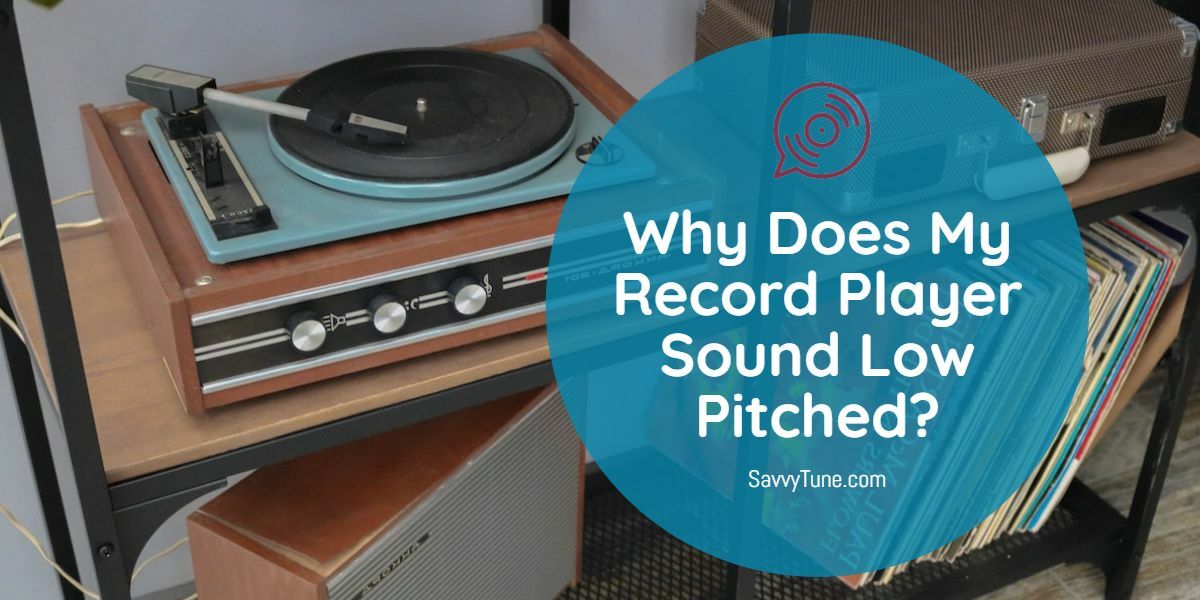Vinyl is all about the listening experience and the lossless sound. So when you’re listening to a record and notice it sounds different, there might be something wrong with your record player.
Well, all it takes is some basic knowledge of the device components to know where the issue is coming from. That’s why we’ll break down the bits and pieces that might make your record player sound low-pitched.
So let’s dive into the reasons and fixes for this problem, as well as how to prevent it from happening in the future.
Why Does My Record Player Sound Low Pitched?
Of all the reasons for a deeper, lower-pitched sound when you’re playing an LP, the most frequent one is slower turntable movement.
Vinyl has a bunch of vertical grooves that the stylus goes into to transmit the sound waves. Slower turntable rotation causes the stylus to drag, making the sound less crisp and more “droopy.”
Now, there doesn’t have to be a super obvious delay for it to make a difference in how a record sounds. When your ears are used to a certain tempo and pitch from a song, even a few milliseconds’ lag is noticeable. So what causes this lag?
Why Does a Turntable Turn Slower?
To understand why a turntable gets slowed down, first we need to go over how a turntable moves.
Turntables are either belt-drive or direct drive. A belt-drive player will have an elastic belt around the bottom of the platter that transmits the motor movement to the belt and then the platter. These usually have variable speeds for 33, 45, and 78 RPM records.
A direct drive turntable plays the record by spinning it directly on a spindle connected to the motor. They usually have pitch and speed controllers, which can make their speed deviate from the standard 33, 45, and 78 RPMs.
A slowed-down record player usually has something to do with the torque the player provides to make the record turn. This can be caused by:
A Loose Belt
In belt-drive players, the belt is made of an elastic material that can wear out with use. Do you know how rubber bands get saggy with age? That’s exactly what happens here.
If the belt gets loose enough, it fails to transmit the rotation of the motor to the platter, and then the record doesn’t rotate as fast. This can be a major reason why your record player sounds low-pitched.
Related: Why Do Vinyl Records Sound High-Pitched?
Motor Needs Lubrication
Just like with any device that has moving parts, sometimes the turntable’s motor faces too much resistance if there isn’t enough lubrication. This resistance, paired with the LP’s weight, can slow down the motor’s rotation causing the low-pitched sound.
This is especially noticeable in direct-drive turntables. It can also happen in belt-drive ones, but it’s less of an issue for those.
Sometimes, this problem is caused by accumulated dust and debris that gets into the player and hinders the motor’s rotation.
Pitch is Turned Down
Most modern record players have a pitch control option. This slightly alters the speed with which the record turns, so the end result sounds higher-toned or lower-toned.
If you’ve had guests or small children over, someone might have gotten their hands on the pitch control slider and turned it way lower than usual.
In older records with no pitch control, this problem is a lot rarer. Any changes in pitch would probably be due to any of the previous reasons.
So how do you fix these issues to get your record player back to normal?

How to Fix a Low-Pitched Record Player
Now that we know the “why,” how to fix this low-pitched sound problem can be a lot easier.
Clean and Lubricate the Player
This is a fairly easy step, all you need is:
- Isopropyl alcohol
- A microfiber towel
- A lubricant for mechanical devices
Give your record player an initial wipe using a dry microfiber towel. Then use the isopropyl alcohol on the arm and under the platter. You can find a lot of dust that settles into these areas because of the record player’s horizontal position.
Finally, add a drop of lubricant in the spindle area at the player’s center and another in the motor shaft. This will reduce the resistance from friction and make the player rotate a lot more smoothly.
Check the Pitch Controls
A very easy way to find out whether your record player is slower than usual is to play the same record in digital format and compare the two versions. If you find a few milliseconds of lag, then it’s time to check your record player’s pitch controls.
In modern players, this can be quite straightforward. Just look for a slider or button control on the player and play with it until it sounds right.
In older players, pitch control adjustment screws are found under the platter, or in some cases, on the underside of the player. Once you get there, start adjusting the screws in a clockwise direction to tighten them and speed up the player.
Try not to overshoot the speeding-up process. But even if you do, you can just turn the screws counterclockwise to slow the player down again.
Change the Belt
Last but not least, if you have a belt-drive player, you should check on the condition of the belt and replace it if necessary.
The process is pretty easy, just secure the belt around the area in the platter that holds it, then gently stretch it to go over the motor shaft.
Users also read: Why Isn’t My Record Player Spinning?
But beware that turntable belts come in different sizes. Trying to squeeze on a belt that’s too tight won’t sound right, as well as using a belt that’s too large or one that’s lost its elasticity.
If you’re in a hurry and need to tighten the loose belt you already have, you can do that using a pot of boiling water.
Boil the water, turn off the heat, and then drop in the sagging belt. Leave it in the water for 5–8 minutes then fish it out using a fork. Dry it very well and then put it back on the record player, et voila! You have a belt that’s as good as new.

